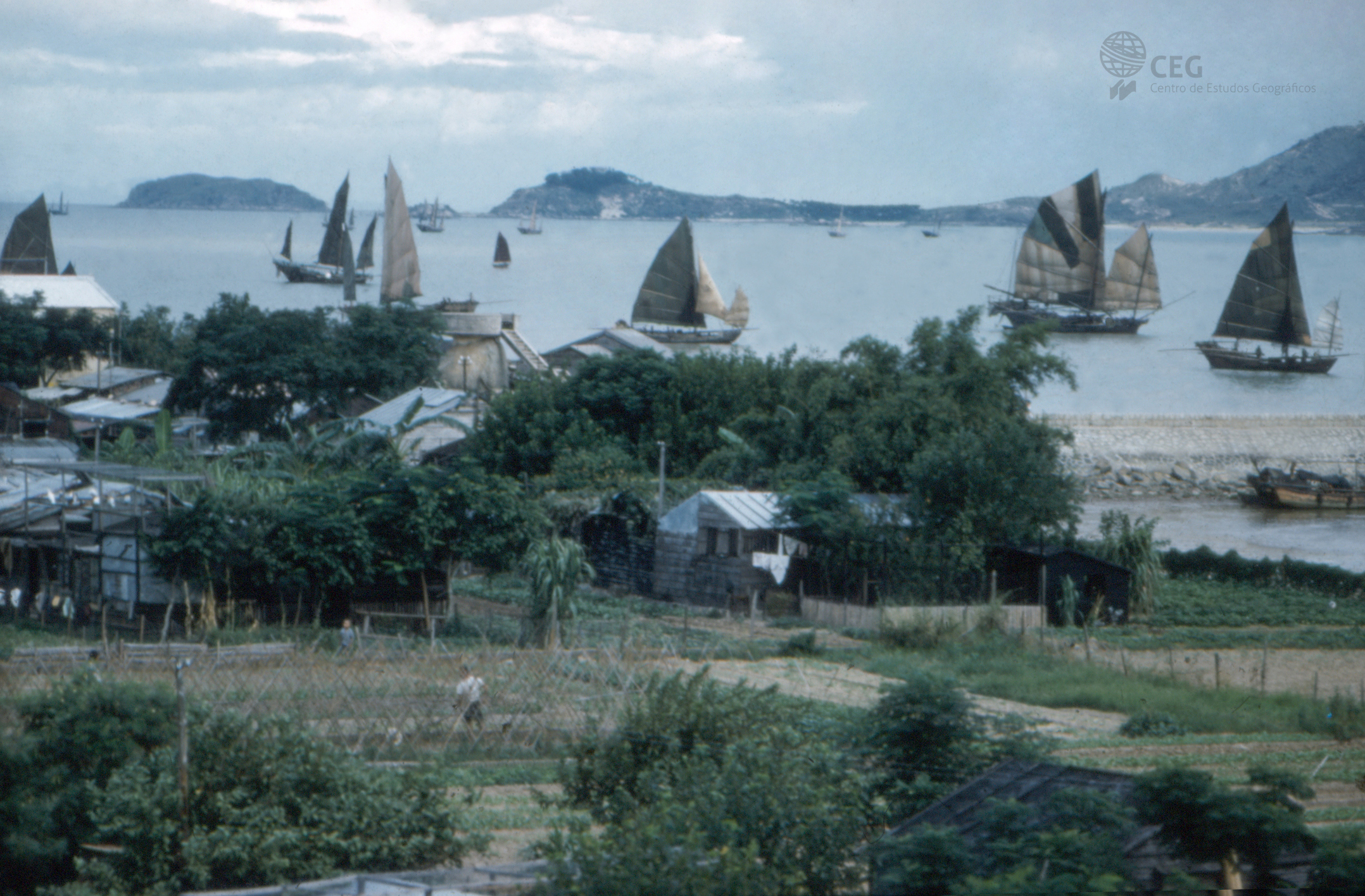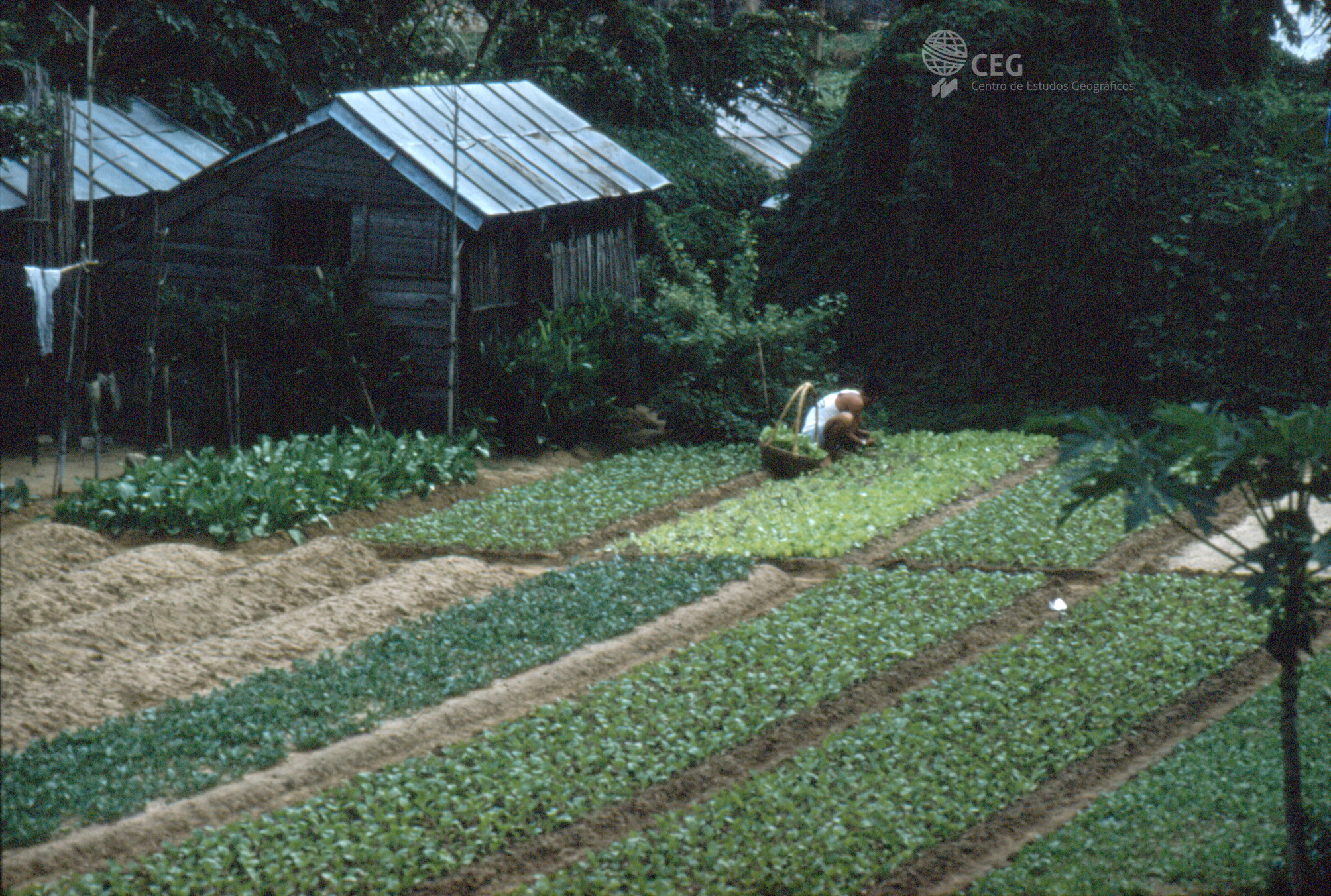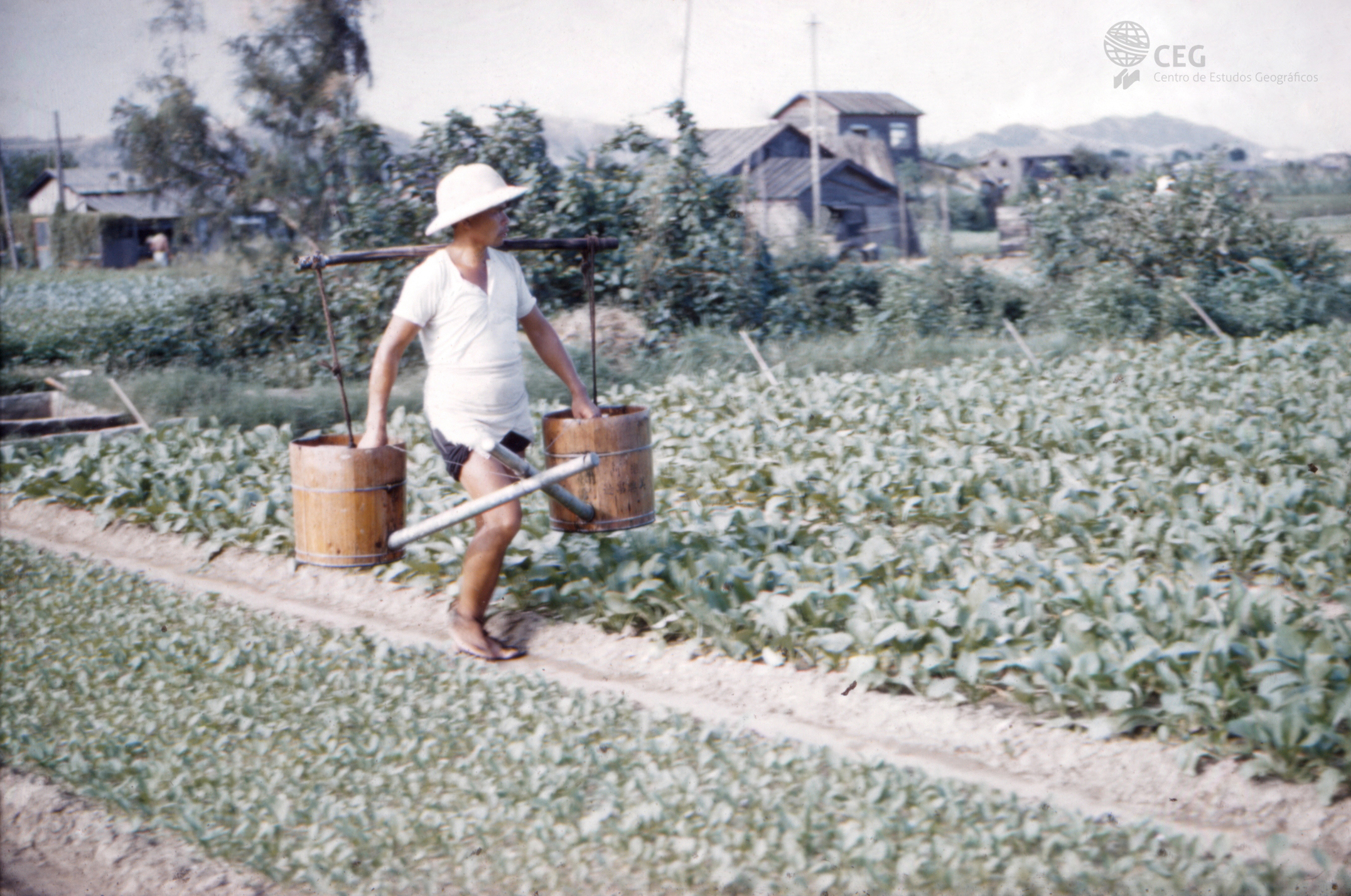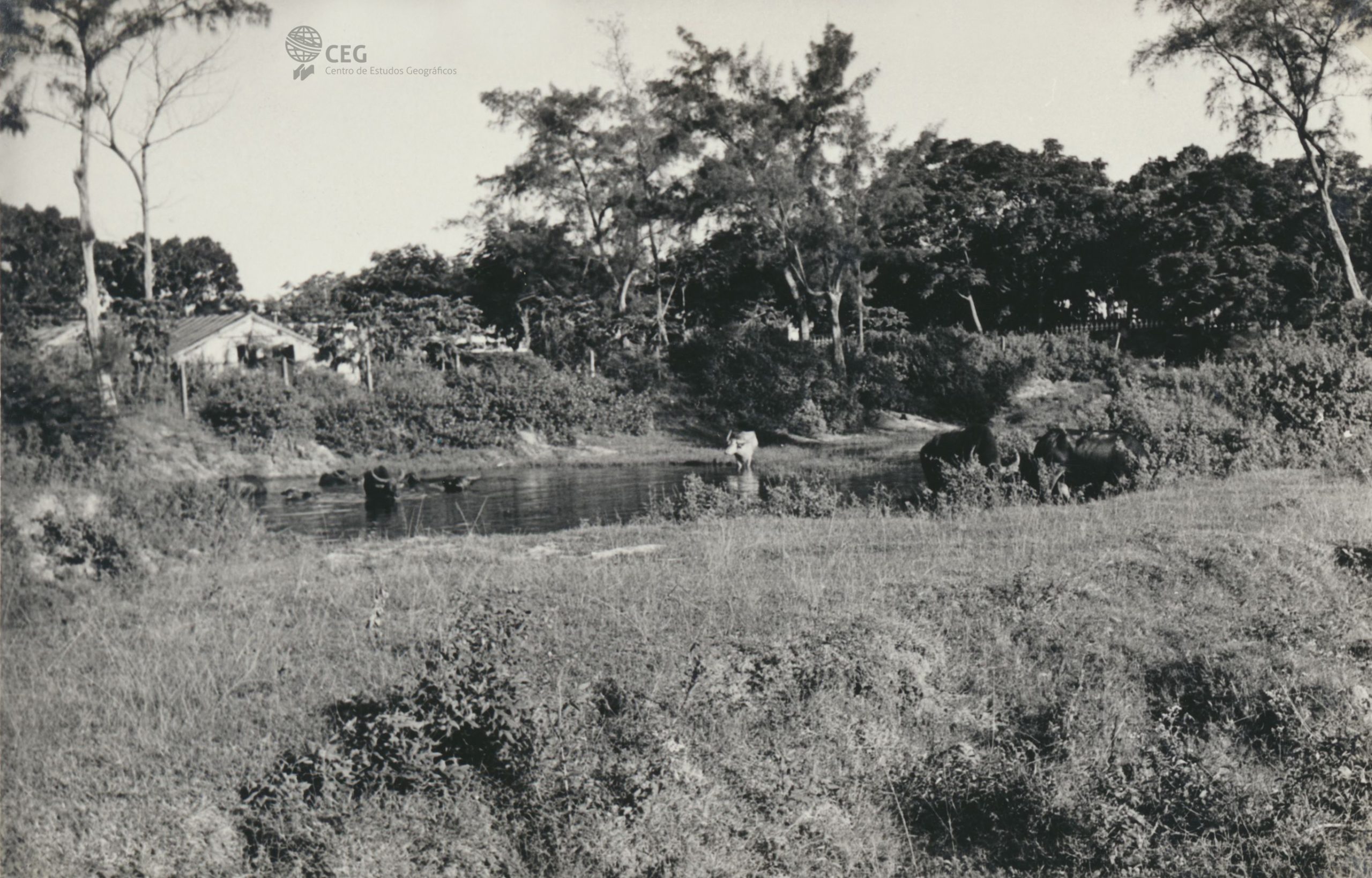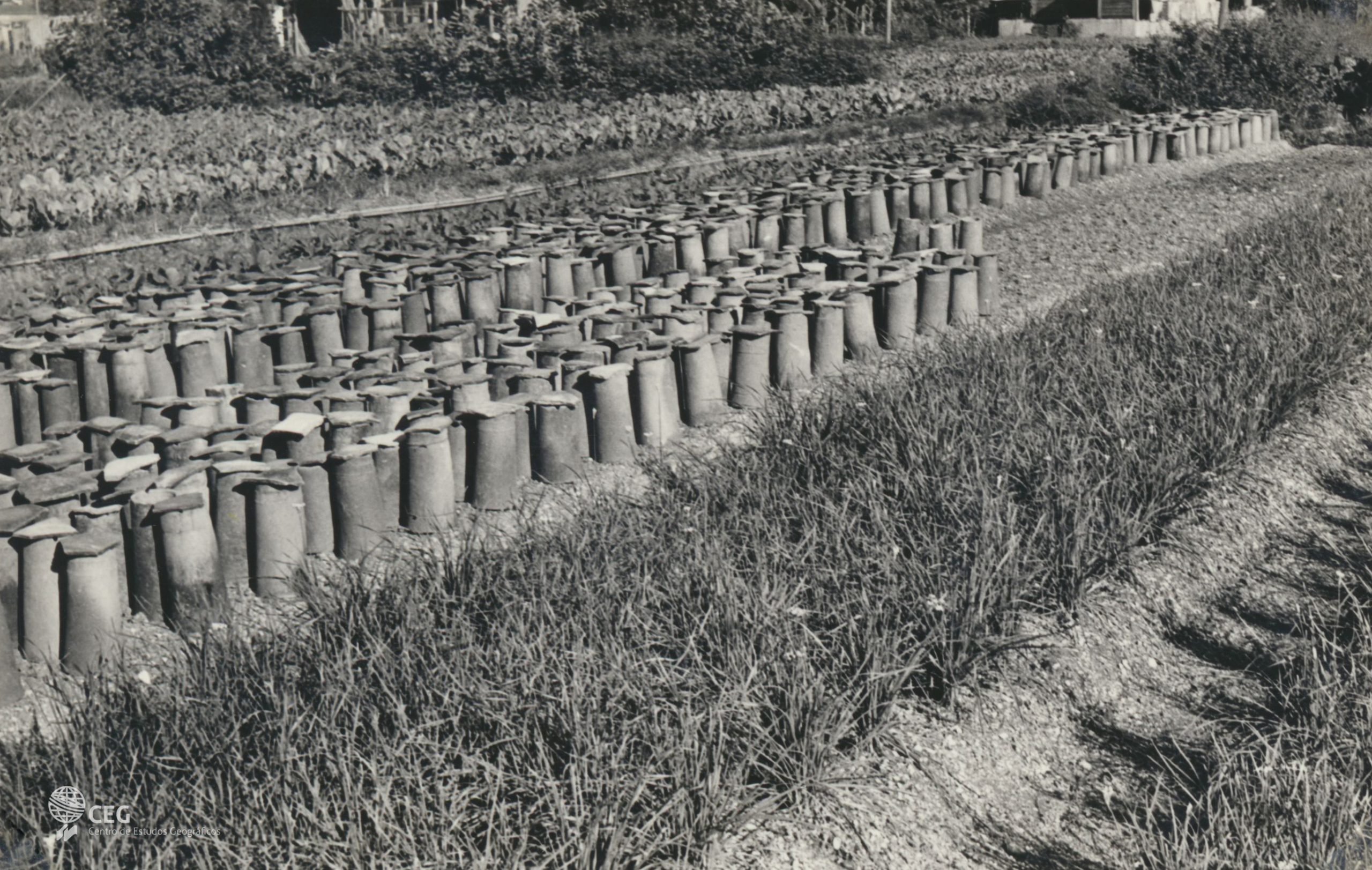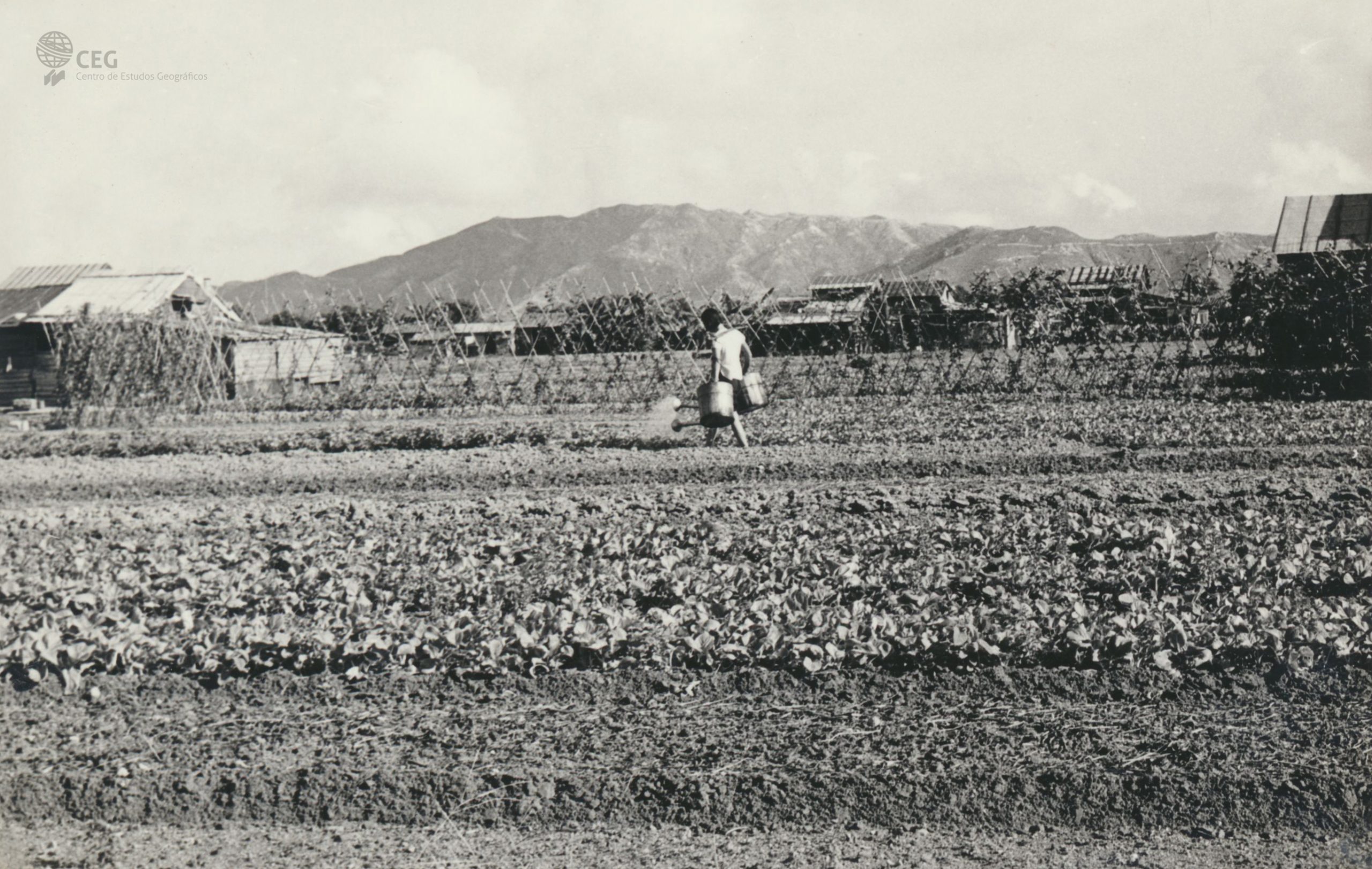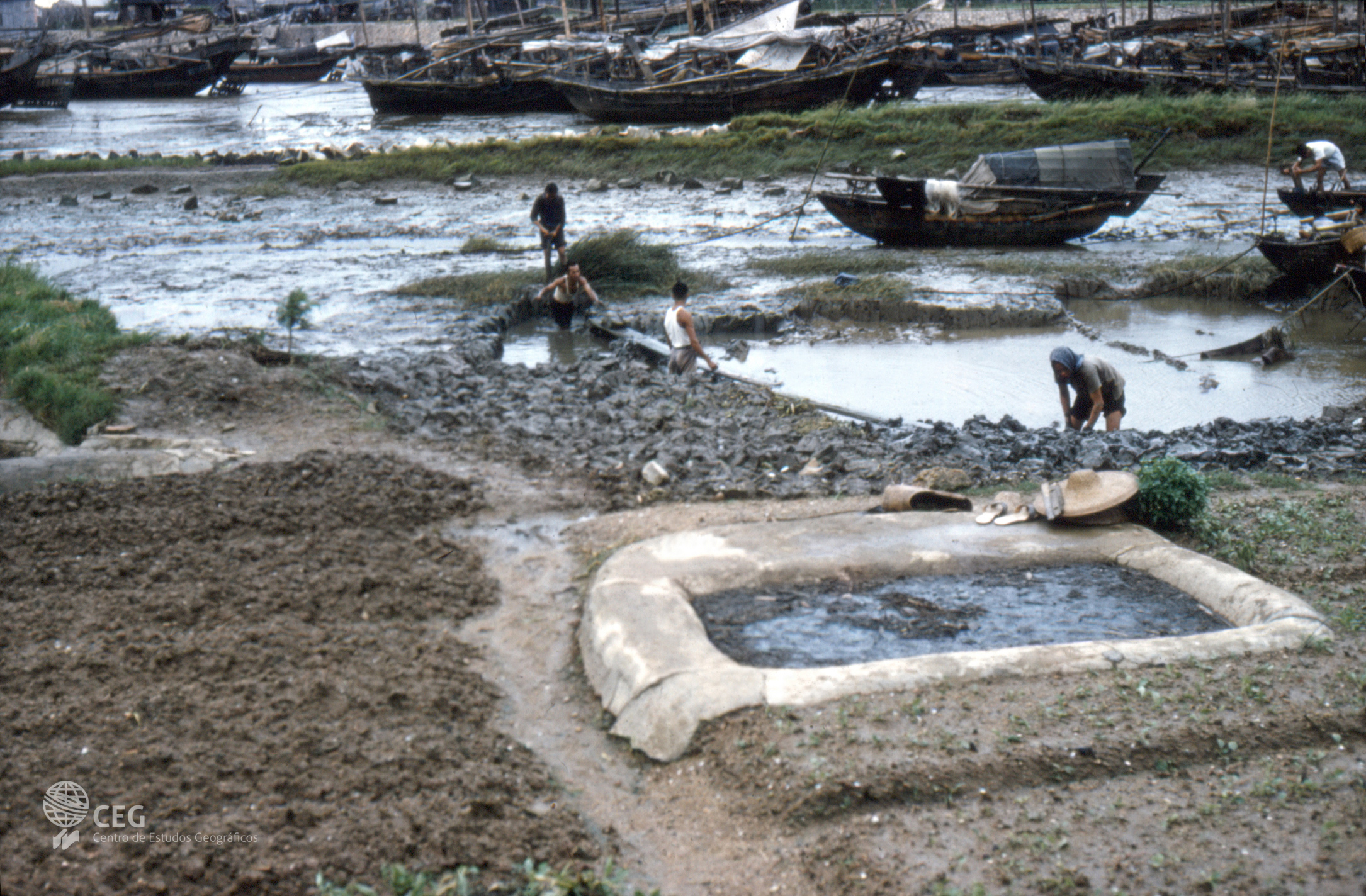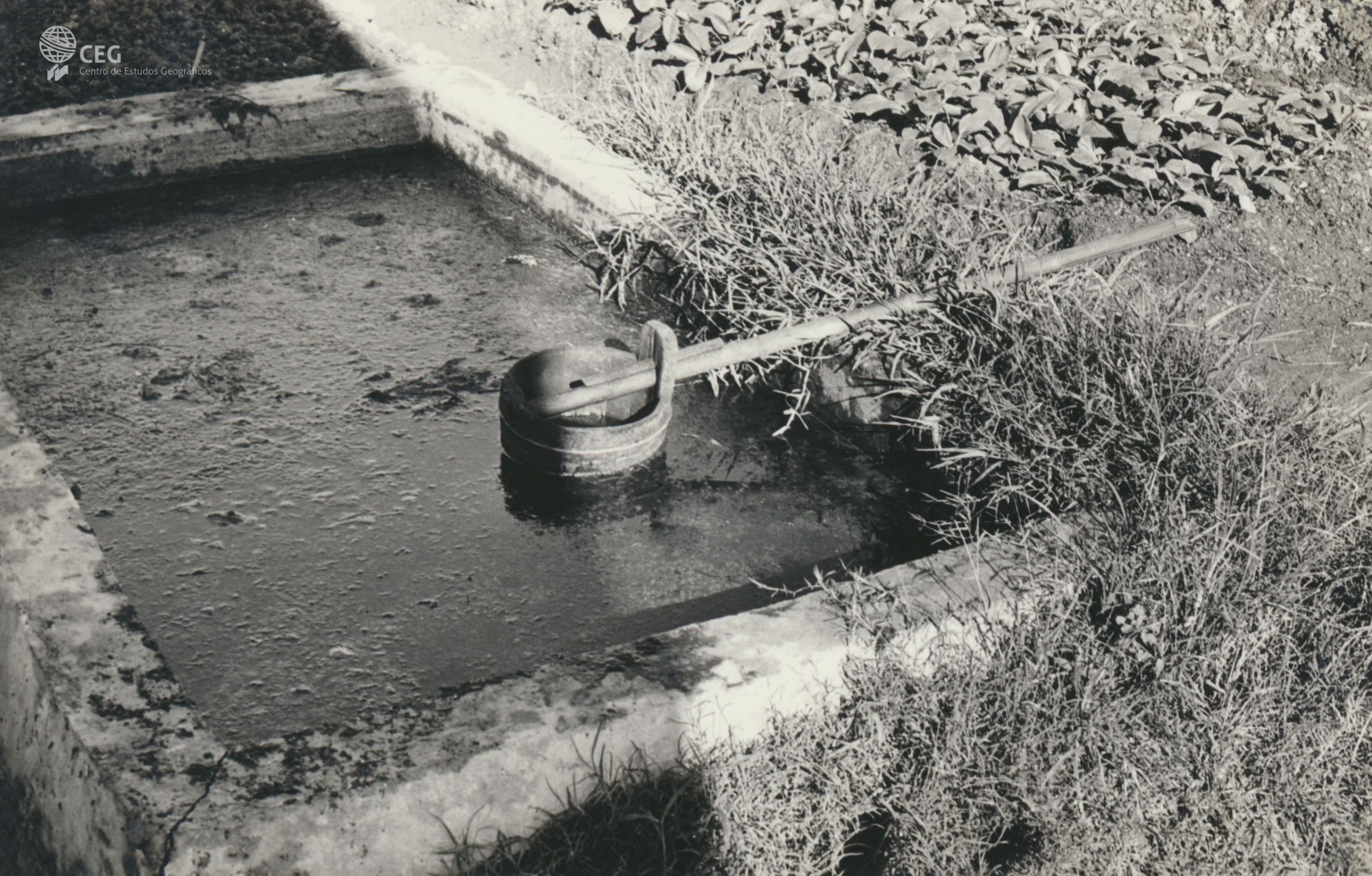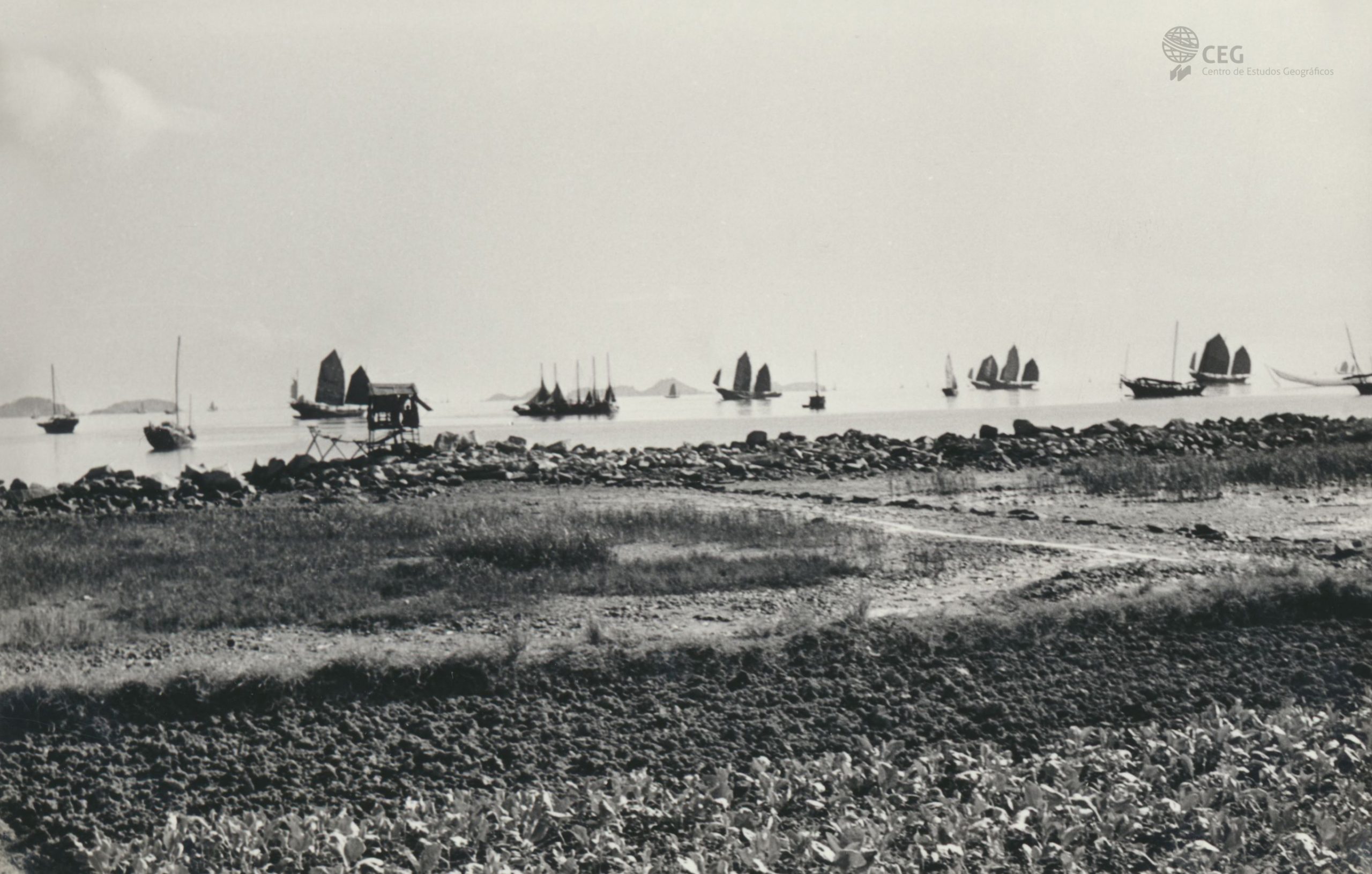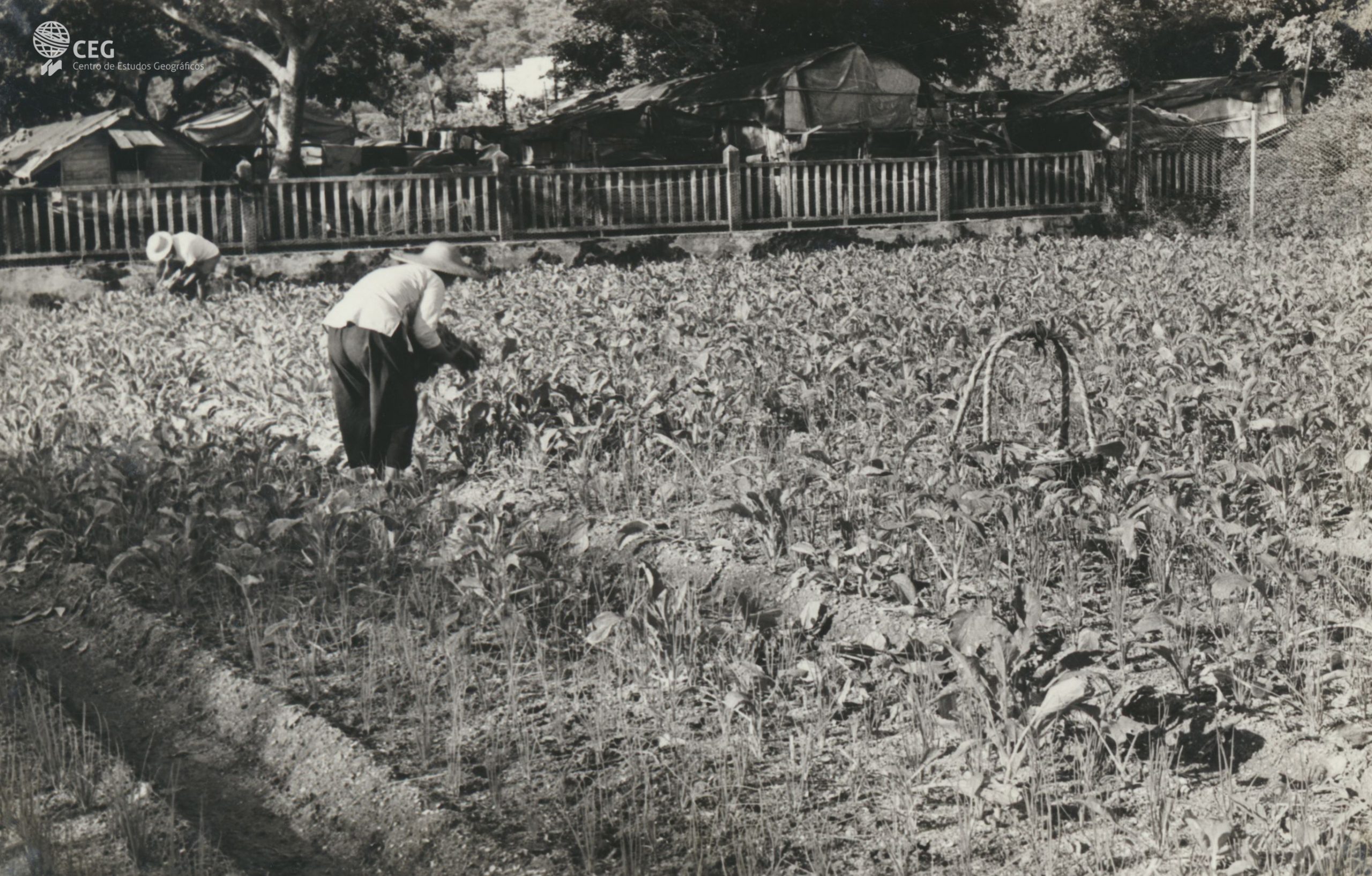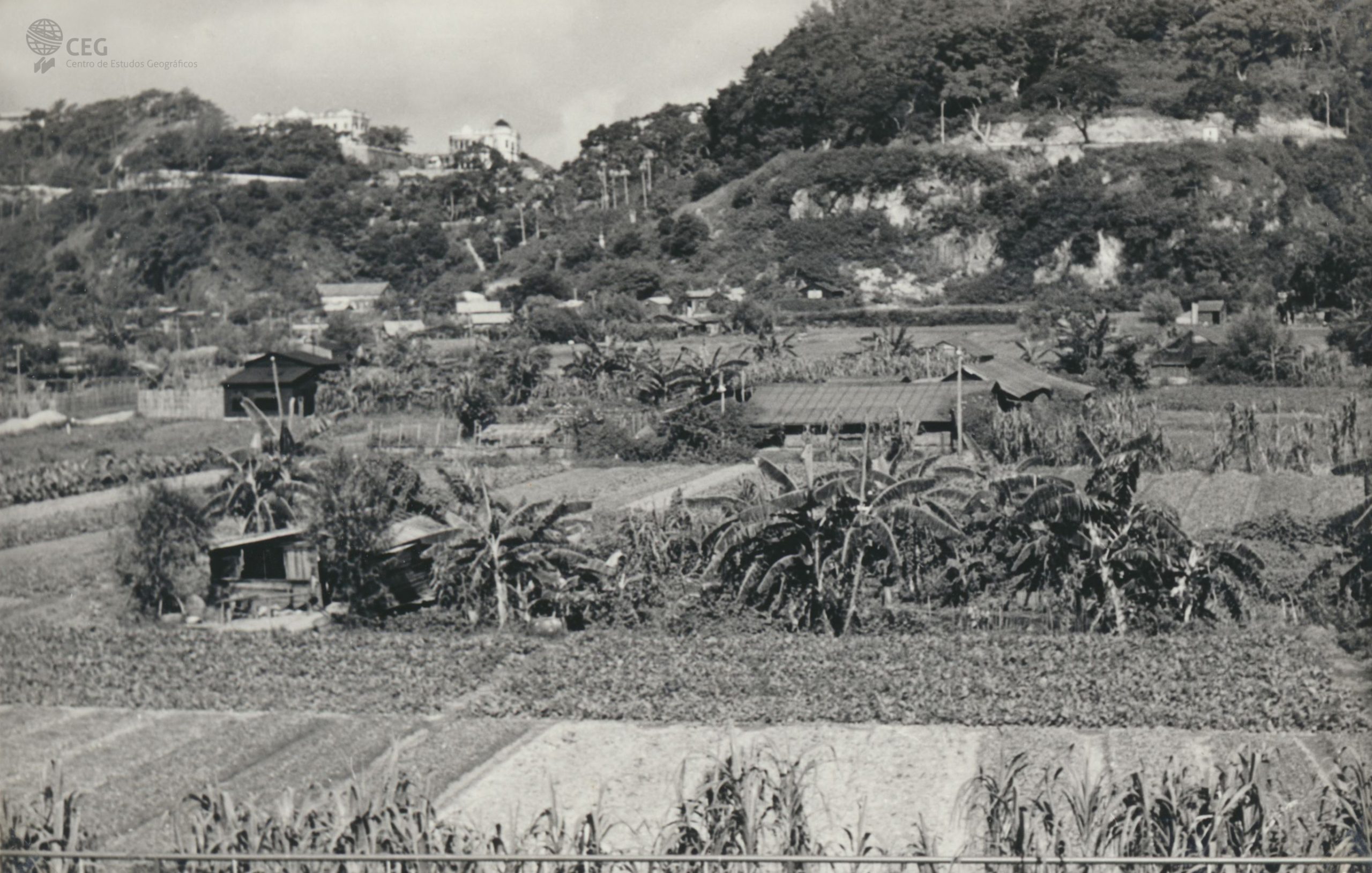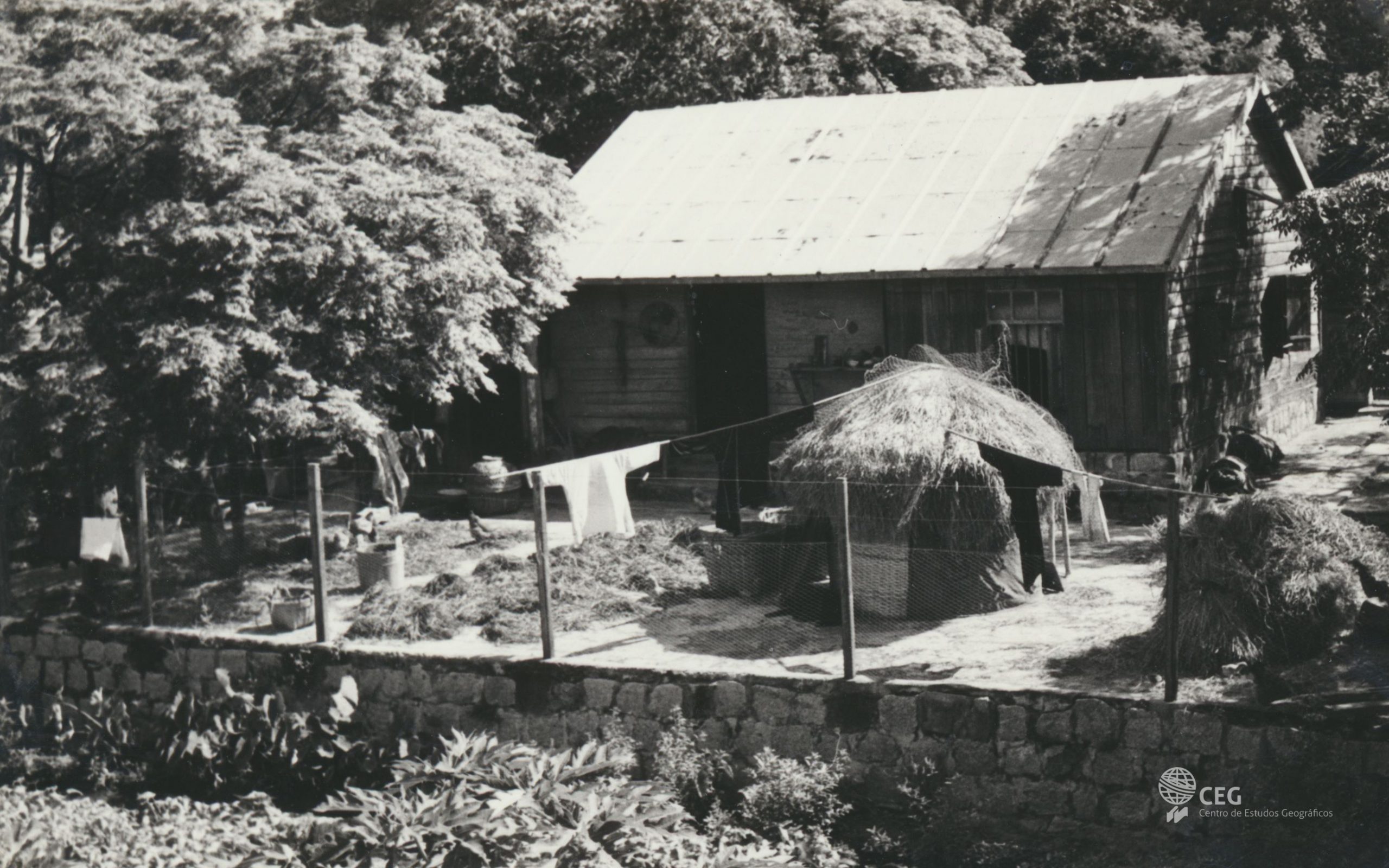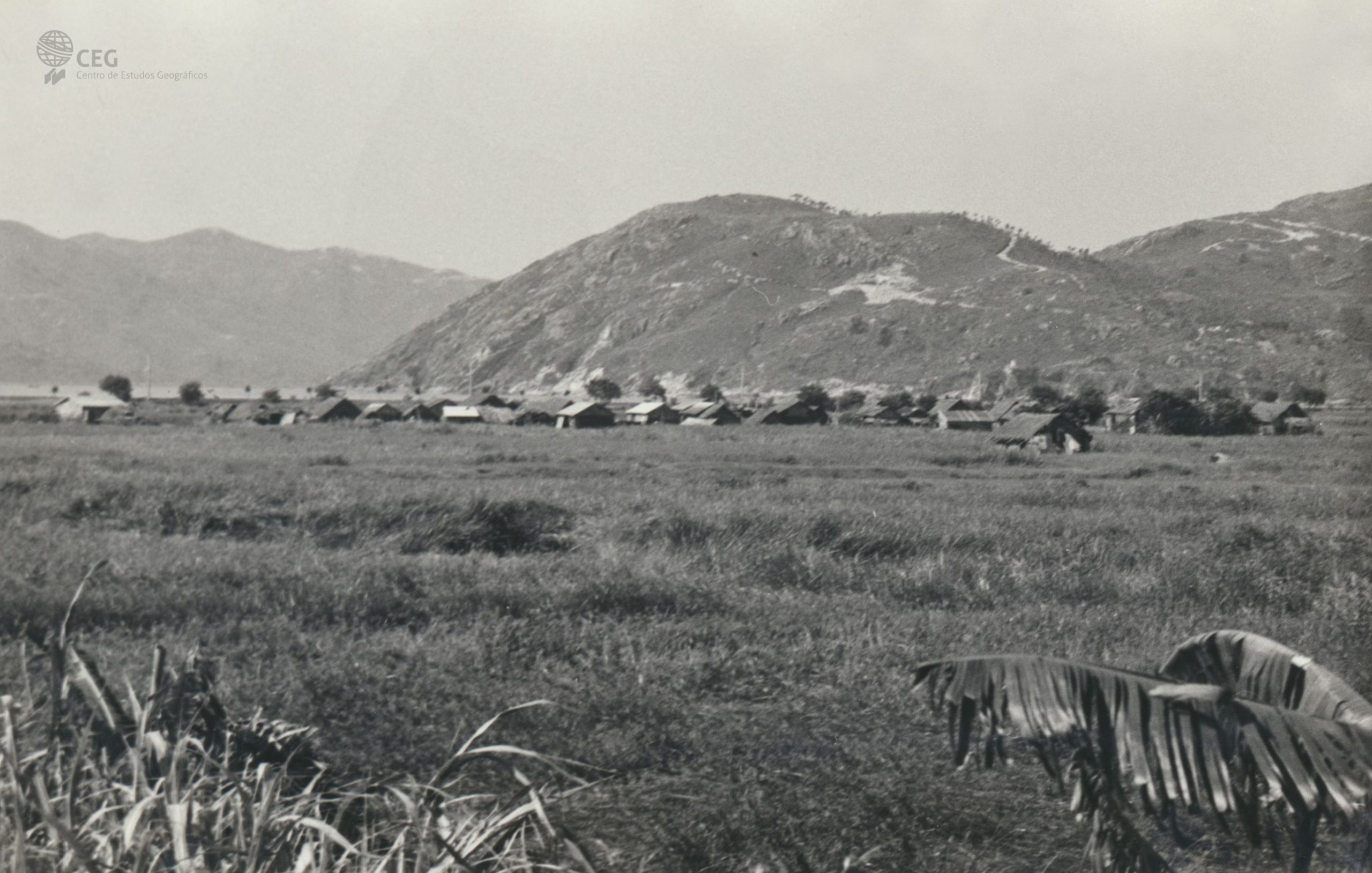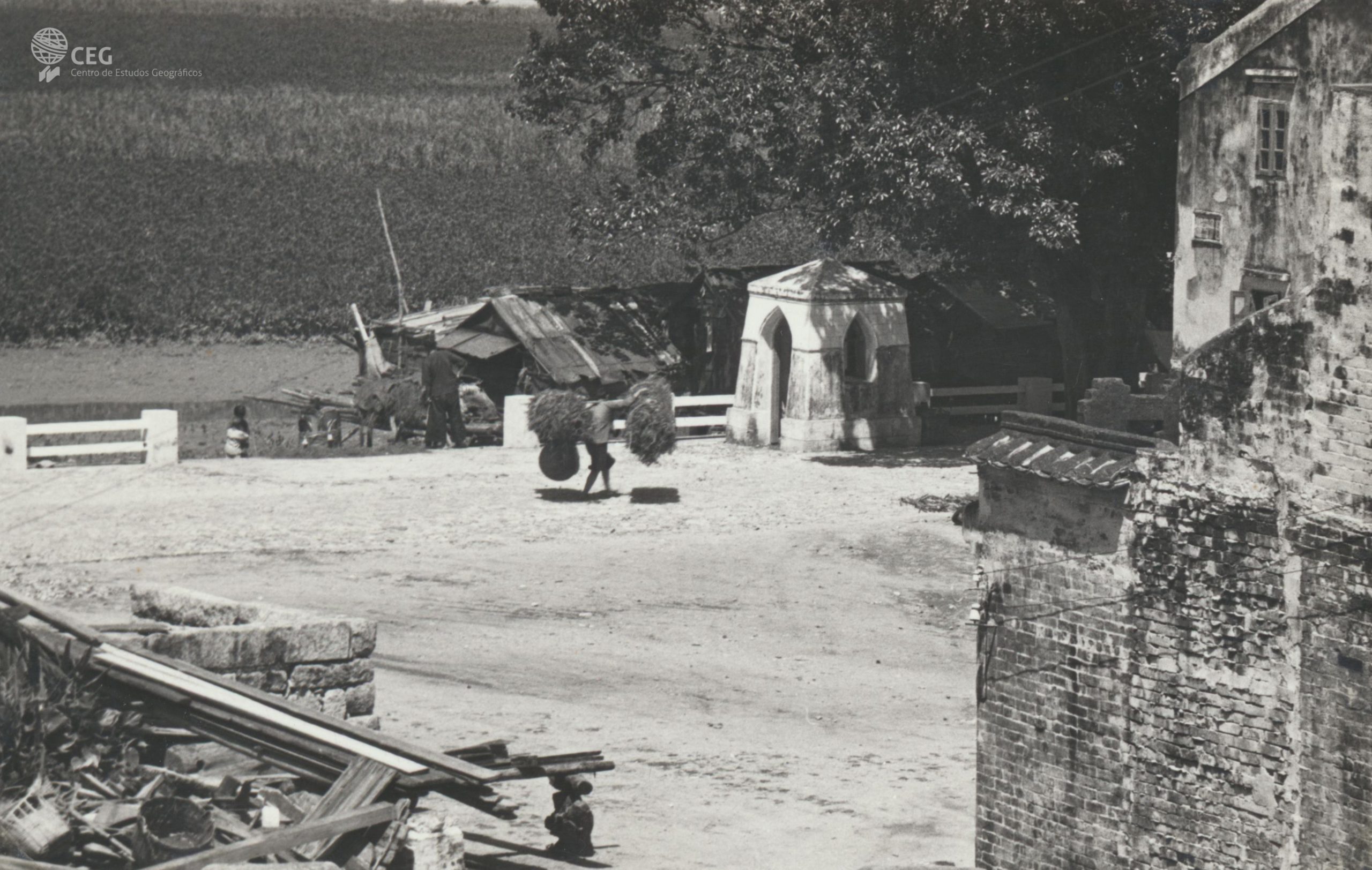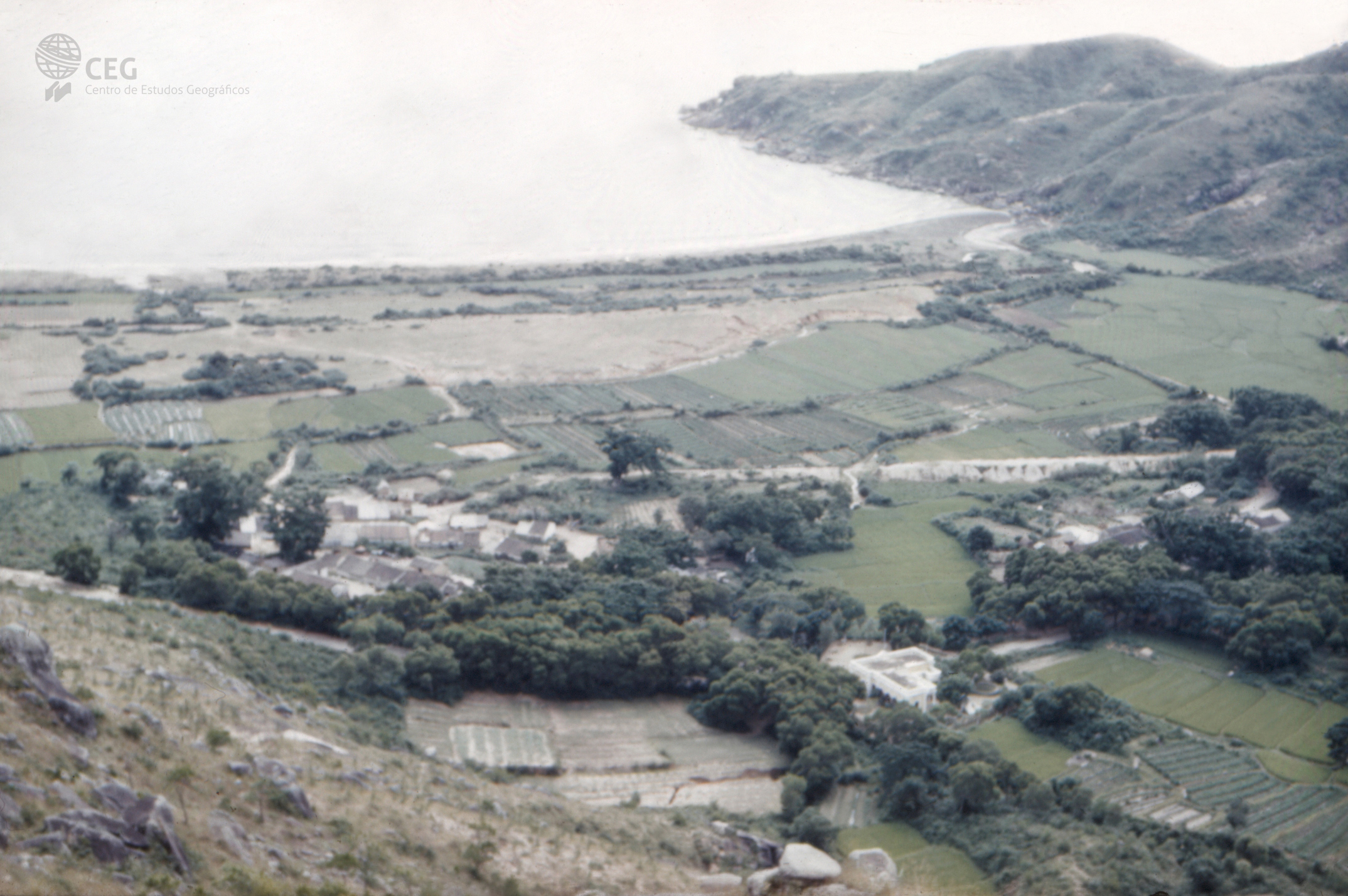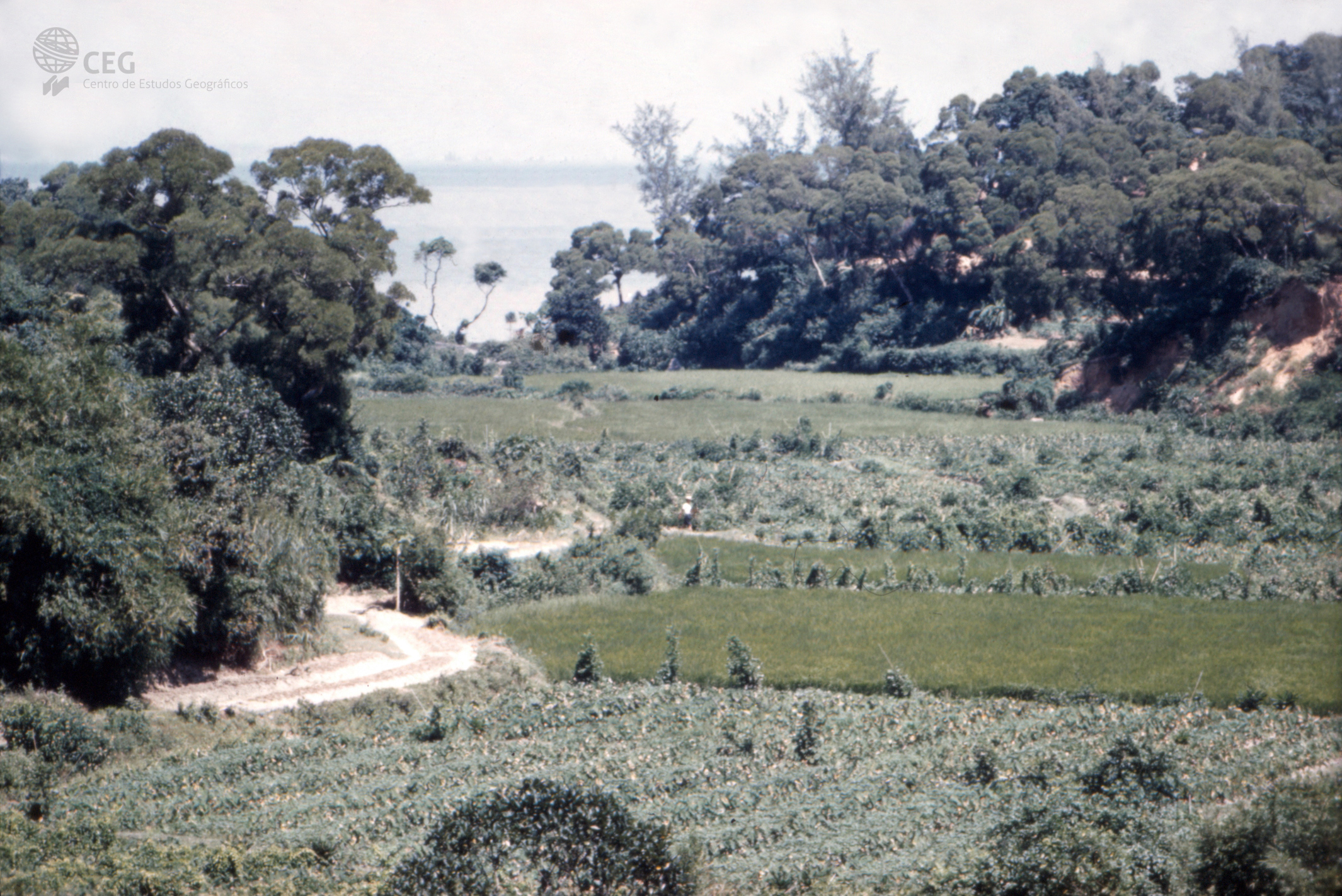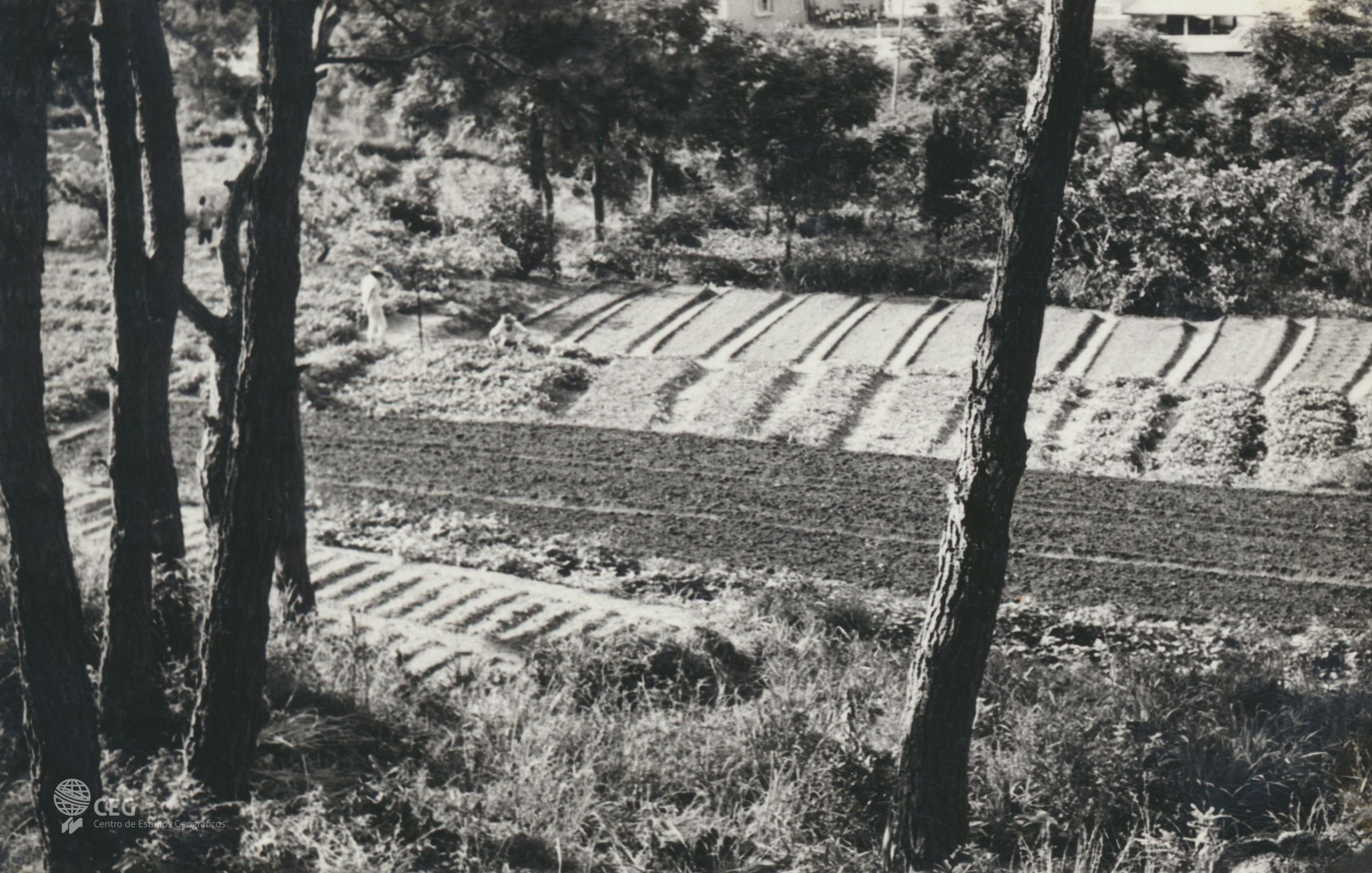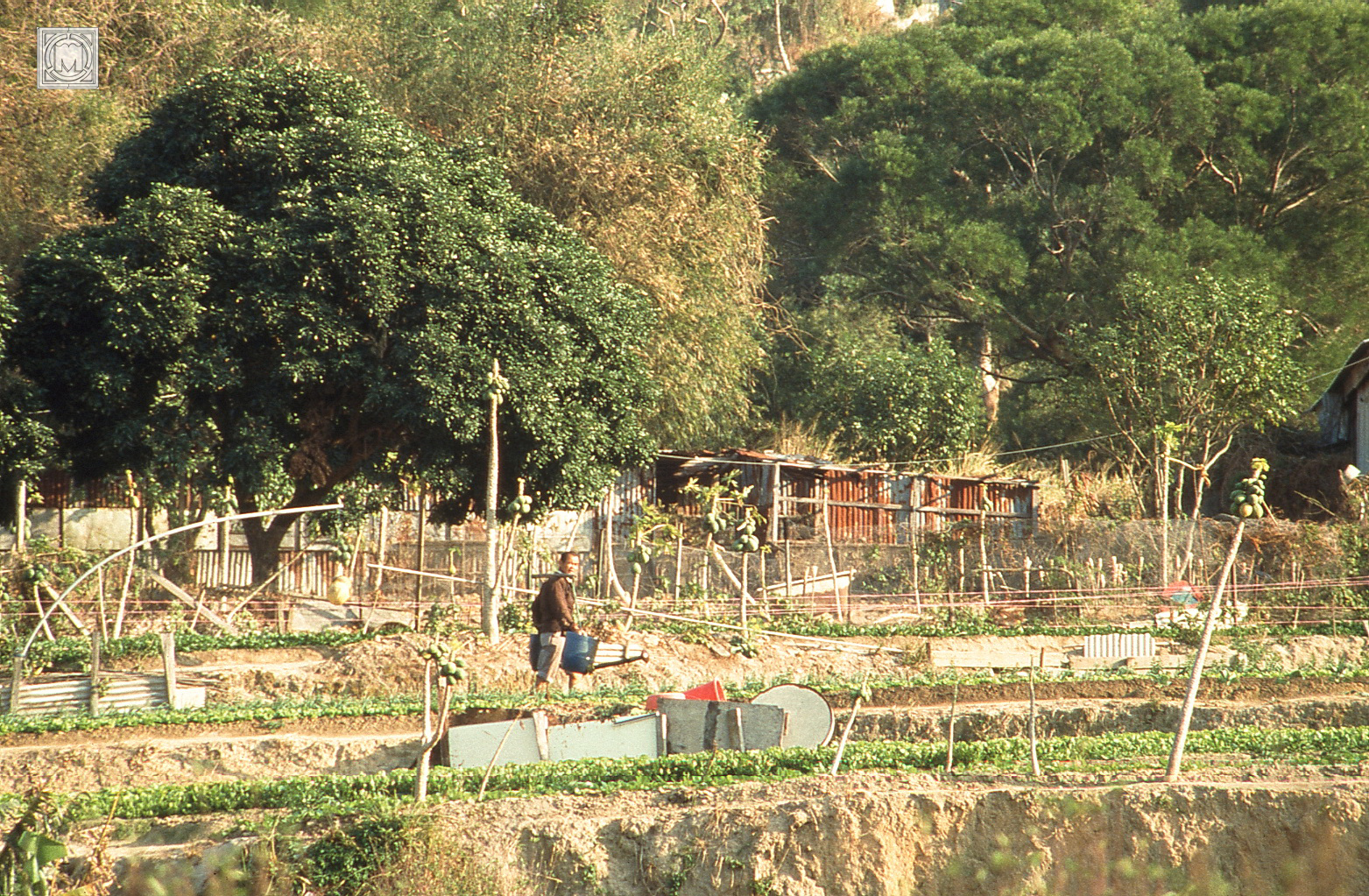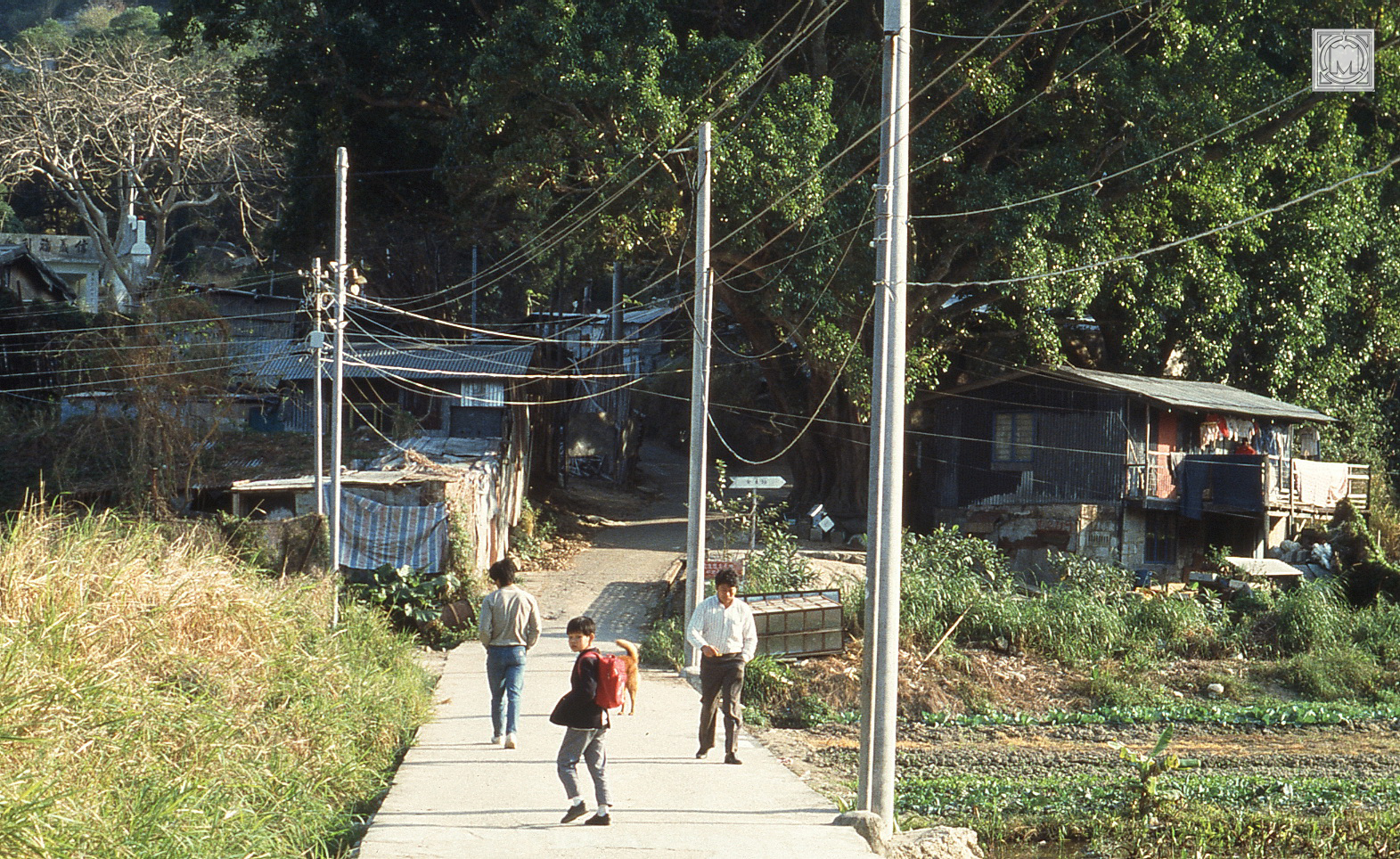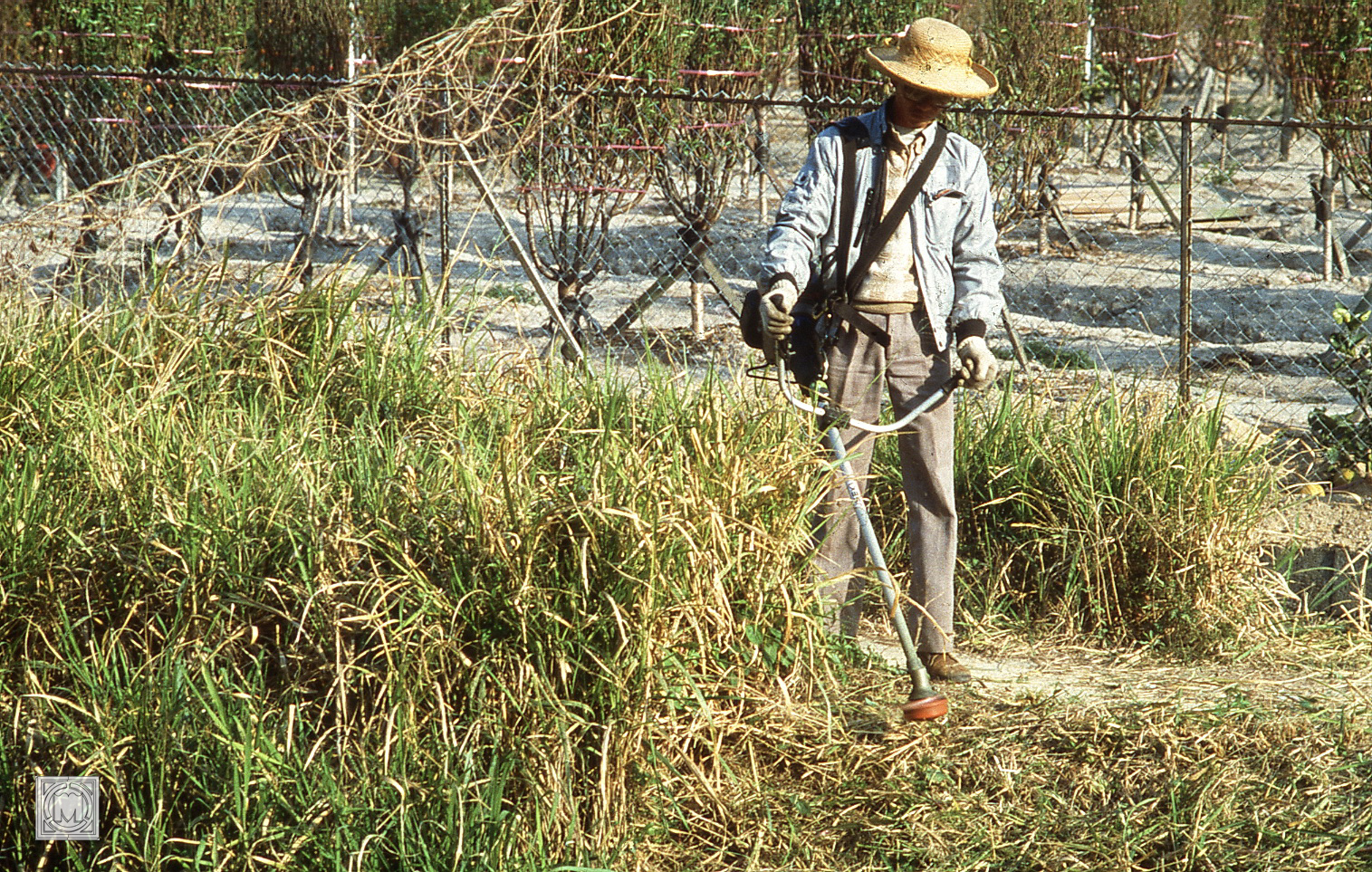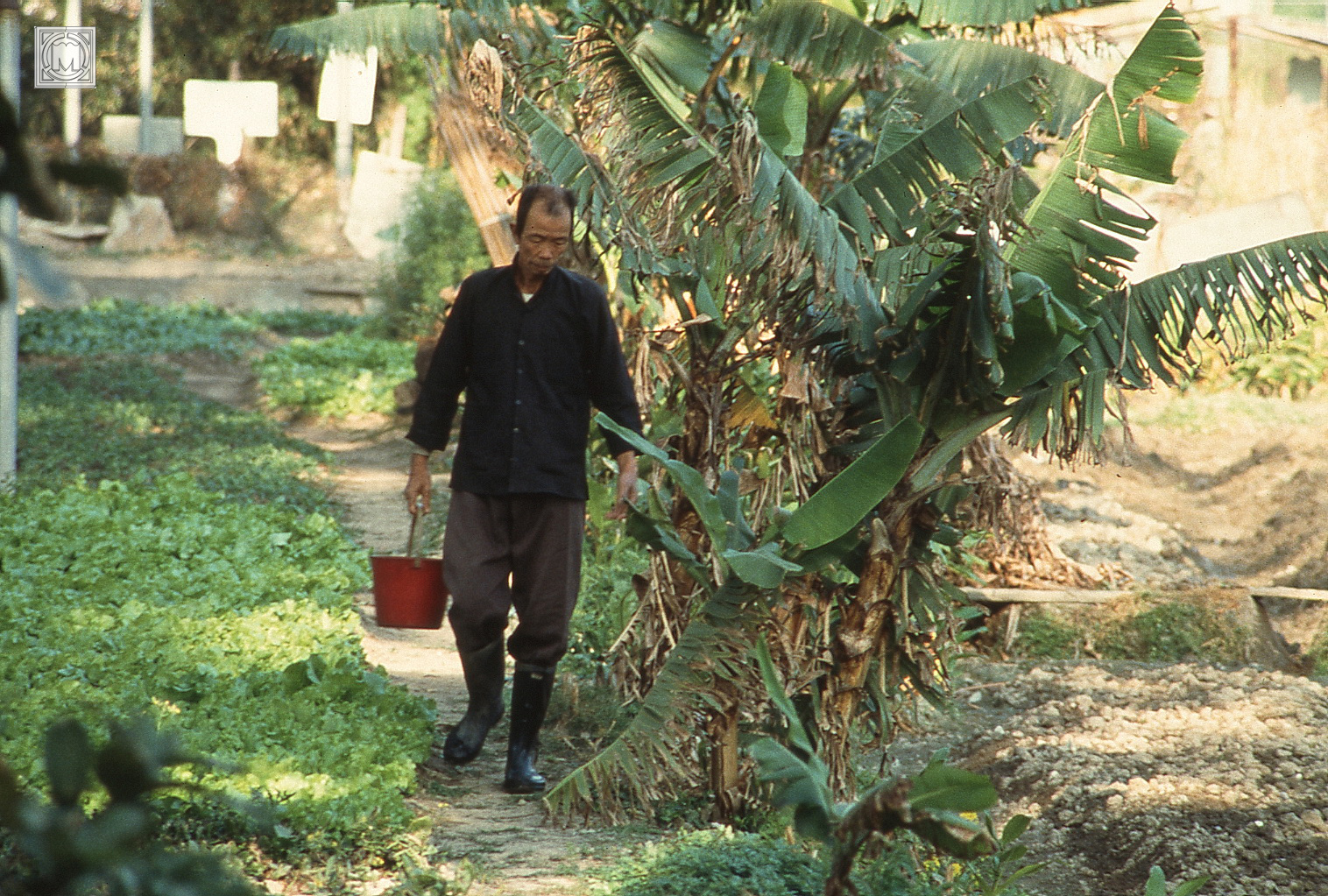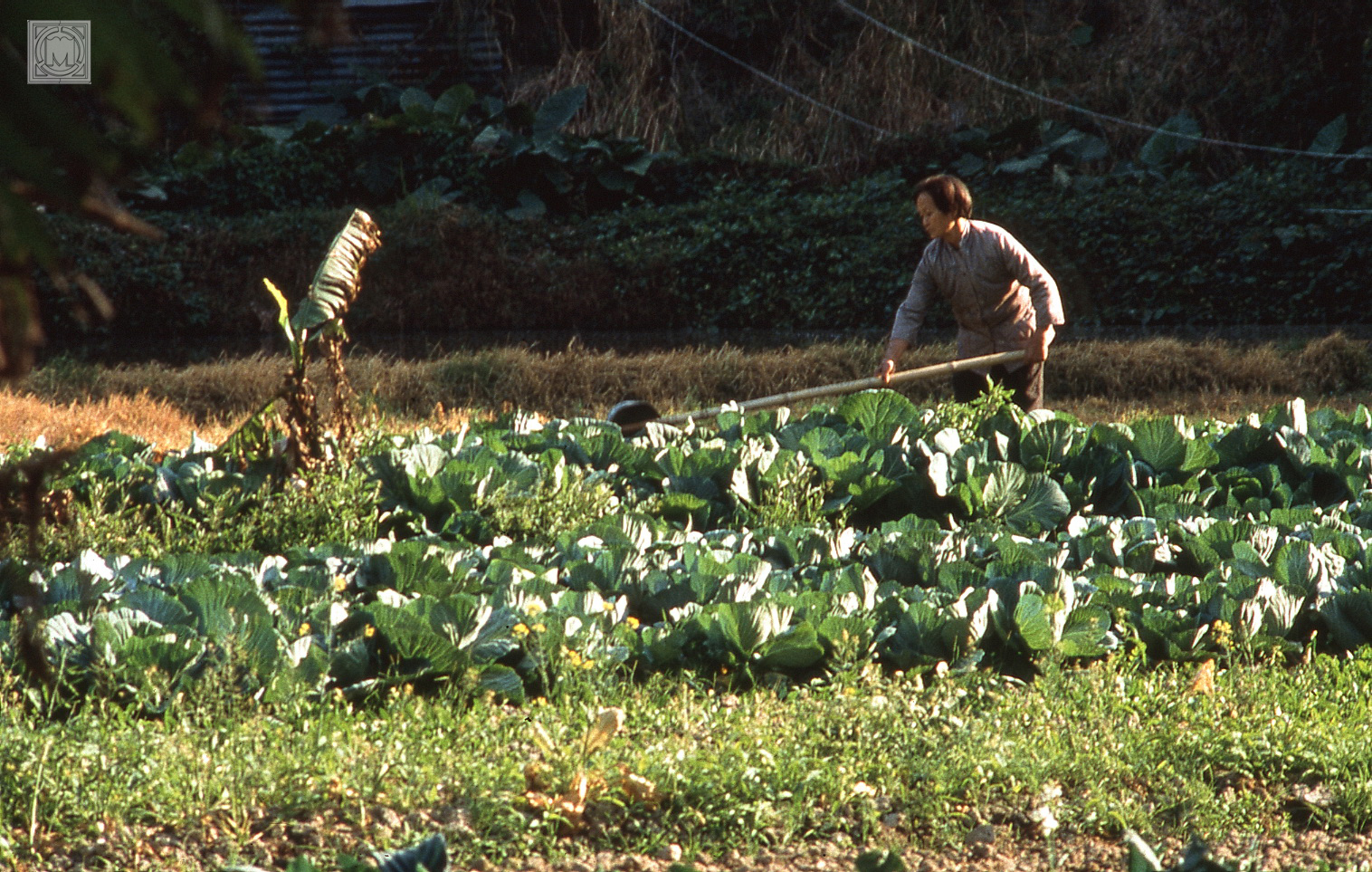No início dos anos 1960, existiam pequenas hortas nos terrenos recém-conquistados ao mar na periferia leste de Macau. Estes aterros cultivados garantiam a subsistência a mais de um milhar de chineses de Macau e também a muitas famílias de refugiados da China Continental. O estudo do modo de vida rural, incluindo o tipo e a disposição das culturas, os sistemas de rega, a estrutura das habitações e o transporte para os mercados, constitui um tema central nos trabalhos dos geógrafos de formação «clássica» como Raquel Soeiro de Brito. Estas fotografias oferecem-nos, assim, as últimas imagens da horticultura chinesa na cidade, nos quatro principais retalhos onde esta então ainda existia: Aterro Novo, Areia Preta, Hipódromo e Istmo. Alguns anos depois, a lente de Eduardo Tomé já só surpreenderá estes resquícios do mundo rural na periferia da ilha de Coloane, onde Raquel Soeiro de Brito ainda observara a coexistência de hortas nas zonas mais baixas com o cultivo de arroz em algumas encostas. Em poucos anos, as fábricas e os blocos de betão tinham tomado o lugar de todas as antigas hortas de Macau e também da Taipa.
In the early 1960s, there were small farmlands in territories recently conquered from the sea on the eastern periphery of Macau. These cultivated landfills ensured the livelihood of more than a thousand Macau Chinese and many families of refugees from Mainland China. Studying the rural way of life, including the type and arrangement of crops, irrigation systems, housing structure and transport of products to markets, was a central theme in the work of geographers with a classic training background, such as Raquel Soeiro de Brito. These photographs show us the latest evidence of Chinese horticultural practices in the city in the four main areas where it still prevailed: Aterro Novo, Areia Preta, Hipódromo and Istmo. A few years later, Eduardo Tomé’s photographic gaze captured these fragments of the rural world on the outskirts of the island of Coloane, where Raquel Soeiro de Brito still witnessed the coexistence of farmlands in the lower areas and rice cultivation in some slopes. Within a few years, industrial units and concrete buildings had taken over from all the former farmlands found in Macau and Taipa.
在1960 年代初期,澳门东部外围有一些最近从海上征服的领土上有小农田。这些耕地确保了数千余名澳门华人和许多来自中国大陆的难民家庭的生计。拉克尔·索埃罗·德·布里托(Raquel Soeiro de Brito)与其他具有“经典”培训背景的地理学家们研究了农村的生活方式,包括农作物的类型和安排、灌溉系统、住房结构和产品运输。这些照片向我们展示了中国在该市四个主要地区的园艺习俗的最新证据 新堆填区 (Aterro Novo),黑沙(Areia Preta),马场(Hipódromo) 和地峡(Istmo)。几年后,爱德华多•托梅(Eduardo Tomé)的摄影目光铺捉到了路环岛郊区的这些农村世界的碎片,而拉克尔·索埃罗·德·布里托(Raquel Soeiro de Brito)目睹了低洼地区的农田与一些山坡上的水稻种植的共存。几年内,在澳门和氹仔,所有旧农田都被工业单位与混凝土建筑取代了。

